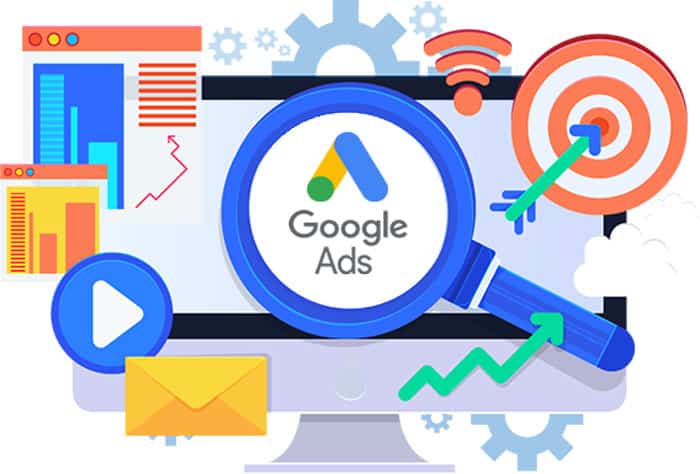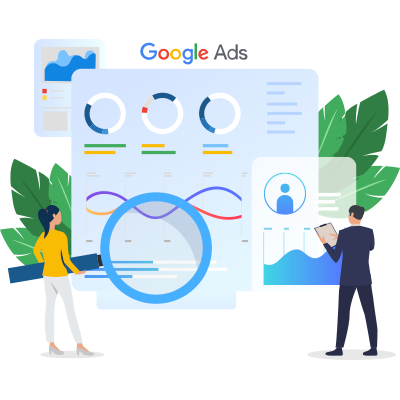What is Remarketing in Google Ads?
Conversions by Re-Engaging Past Website Visitors
Remarketing in Google Ads is a powerful advertising strategy that targets users who have previously interacted with your website or mobile app but did not complete a desired action, such as making a purchase or filling out a form.
By displaying customized ads to these users as they browse other websites or apps, remarketing encourages them to return and convert.
Studies have shown that remarketing campaigns can increase conversion rates by up to 150%, making it an essential tool for businesses looking to recover potentially lost customers.

Why is Remarketing Important in Google Ads?
Remarketing in Google Ads is one of the most effective ways to re-engage users who have already expressed interest in your products or services.
According to Google, nearly 96% of website visitors leave without converting on their first visit. Remarketing addresses this issue by keeping your brand visible to those who have already interacted with your site.
This technique leads to increased brand awareness and can result in higher conversion rates. Remarketing has proven to drive significant results for businesses by targeting potential customers at a later stage of their purchasing journey.
Key Benefits of Google Ads Remarketing
Remarketing ensures you are not losing out on potential customers who may have shown interest but didn’t convert the first time.
This strategy is crucial for businesses looking to increase brand awareness, boost sales, and improve return on investment (ROI).
Remarketing campaigns have been shown to increase conversion rates by over 50%.


Types of Remarketing in Google Ads
Remarketing in Google Ads offers various strategies to re-engage users based on their behavior on your site. Two common types are:
- Standard Remarketing: Targets users who visited your site and shows them ads as they browse other sites on the Google Display Network. This is one of the most common remarketing methods and works well for both e-commerce and lead-generation businesses.
- Dynamic Remarketing: Provides a more personalized experience by displaying ads based on products or services that users viewed on your site. This type of remarketing has been found to increase conversions by 30%, making it highly effective for e-commerce businesses.
How Do You Retarget with Google Ads?
Retargeting with Google Ads works through the use of cookies. When a user visits your website, a cookie is placed in their browser.
This allows Google to identify these users and show them targeted ads as they continue browsing the web.
Remarketing can be implemented across both the Google Display Network and Google Search Network.
Studies have shown that 43% of users return to purchase after seeing a remarketing ad, proving its effectiveness in increasing conversions.


Creating a Remarketing Audience in Google Ads
To create a remarketing audience for your Google Ads, first, you need to install a remarketing tag on your website.
Then, you can create an audience list based on factors like page visits, time spent, or actions taken. Once this list is set, you can target these users with personalized ads.
How to Set Up Remarketing in Google Ads
Setting up remarketing in Google Ads allows you to re-engage past visitors with personalized ads, increasing your chances of conversions. Here’s how to get started:
- Install the Remarketing Tag: First, place the remarketing tag on your website. This is a small snippet of code that tracks visitors’ activities.
- Define Your Audience: Segment your audience based on behaviors, such as people who visited specific product pages or completed a particular action.
- Design Engaging Ads: Your ads should resonate with users by showcasing the products or services they previously interacted with. The more personalized, the better.
- Monitor Performance: Regularly check how your remarketing campaign is performing and adjust accordingly.


Types of Remarketing You Can Use
Remarketing offers various strategies to re-engage potential customers, each tailored to different user interactions. Here are the key types of remarketing you can use:
- Remarketing Lists for Search Ads (RLSA): RLSA shows ads to people who have previously visited your site while they search for related keywords on Google. This type of remarketing can increase conversion rates by over 50% and is especially useful for targeting users with high purchase intent.
- Video Remarketing: This involves showing ads to people who have previously interacted with your YouTube videos or channel. Video remarketing has proven to drive higher engagement rates, as it targets users who have already shown interest in your brand.
- Remarketing with Google Display Network: This method involves showing display ads to users as they browse other websites, increasing the chance of conversion through visual reinforcement of your products or services.
Factors to Consider for Effective Remarketing
For a successful remarketing campaign, it’s essential to focus on key factors that can maximize engagement and conversions. Consider the following elements:
- Frequency Capping: Too many ads can lead to ad fatigue, causing users to ignore your message. Set frequency caps to limit how often your ads are shown to the same user.
- Target Segmentation: Create multiple remarketing lists based on user behavior. For example, visitors who abandoned their shopping carts should see different ads than those who just visited a product page.
- Ad Personalization: The more relevant your ads are to the user, the higher the chances of conversion. Use dynamic ads to show users exactly what they are interested in.
- Mobile Optimization: Mobile users make up over 50% of internet traffic, so ensure your remarketing ads are optimized for mobile devices.
- A/B Testing: Test different ad creatives, headlines, and targeting methods to see what resonates best with your audience. Regular testing can improve your campaign’s performance over time.


Remarketing on Google Ads for Campaign Success
Remarketing allows businesses to reconnect with users who have already shown interest, making it a powerful tool for increasing conversions.
By displaying customized ads that reflect the user’s previous interactions with your website, you increase the likelihood that they will return and complete the action they initially started.
For example, brands that use remarketing effectively can see a 10-20% increase in conversions.
Common Google Ads Remarketing Mistakes to Avoid
Avoiding common mistakes is crucial for the success of your remarketing efforts. Here are key errors to watch out for:
- Overexposure: Showing ads too frequently can lead to user annoyance. Ensure you set frequency caps.
- Generic Ads: Avoid using one-size-fits-all ads. Personalize your ads to reflect what users are interested in.
- Ignoring Mobile Users: Ensure your remarketing ads are mobile-optimized, as mobile users may comprise a large portion of your audience.
- Not Using Segmentation: Failing to segment your audience leads to less relevant ads, which can hurt your performance.


How Remarketing Can Improve Your Google Ads Campaigns
Remarketing allows you to re-target potential customers who have already shown interest in your product. According to WordStream, remarketing can increase conversion rates by 30%.
By strategically targeting users based on their previous interactions with your website, you can increase engagement and drive more conversions without spending additional resources on attracting new visitors.
Key Metrics to Track for Remarketing Success
Tracking key metrics is essential for evaluating the effectiveness of your remarketing campaigns. Here are the most important metrics to monitor:
- Conversion Rate: Track how many people are completing your desired action, such as purchasing a product or filling out a contact form.
- Click-Through Rate (CTR): Monitor how often users click on your remarketing ads. A high CTR indicates effective targeting and engaging ads.
- Cost Per Conversion: Calculate how much you are paying for each completed conversion. This metric helps you determine the efficiency of your campaign.
- Impression Share: Measure how often your remarketing ads are shown compared to the total number of available impressions. A higher share means your ads are being seen more often.
- Return on Ad Spend (ROAS): This metric shows how much revenue you are earning for every dollar spent on remarketing ads. A higher ROAS means your campaign is effective in generating profits.


Conclusion:
Remarketing in Google Ads is an invaluable strategy for increasing conversions and driving more revenue.
Whether you’re a small business or a large enterprise, remarketing provides the opportunity to engage with users who have already shown interest in your offerings, improving your overall ad performance.
Start using remarketing today to maximize your campaign’s potential and watch your conversions grow. Partnering with a professional Google Ads agency ensures your remarketing strategy is expertly managed, driving better results with targeted precision